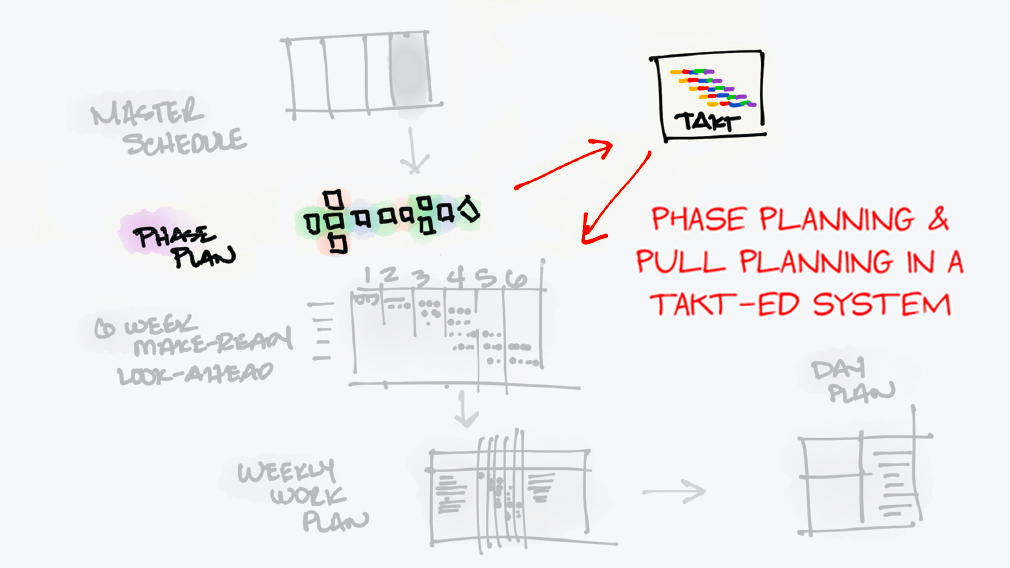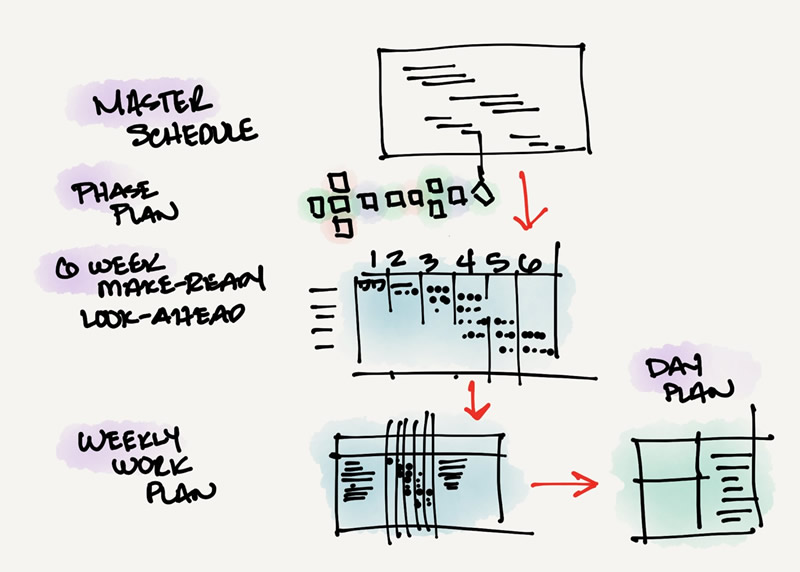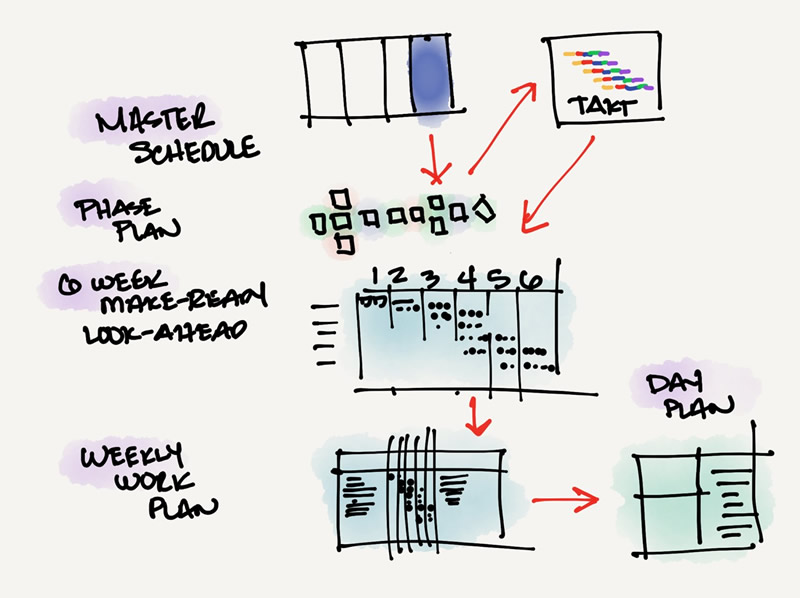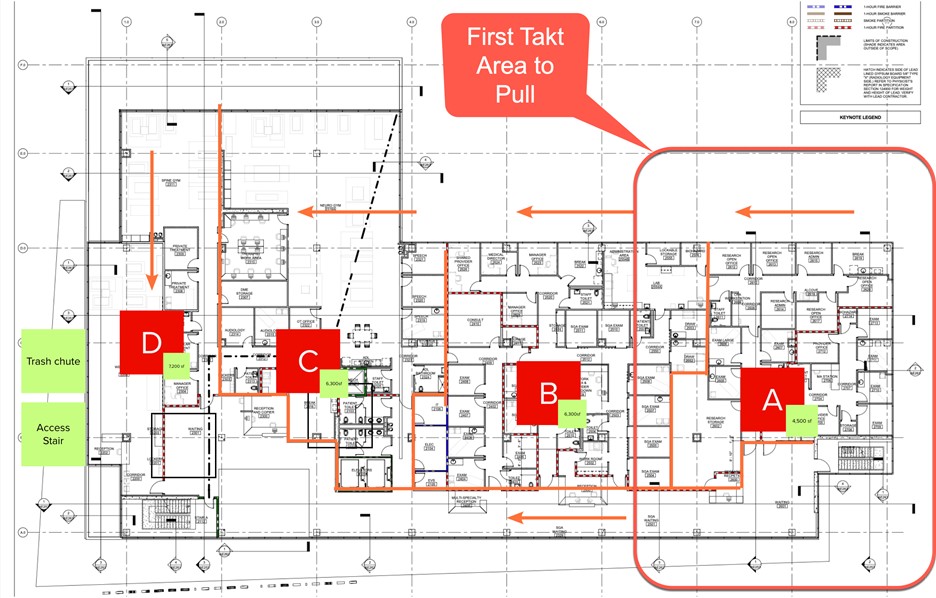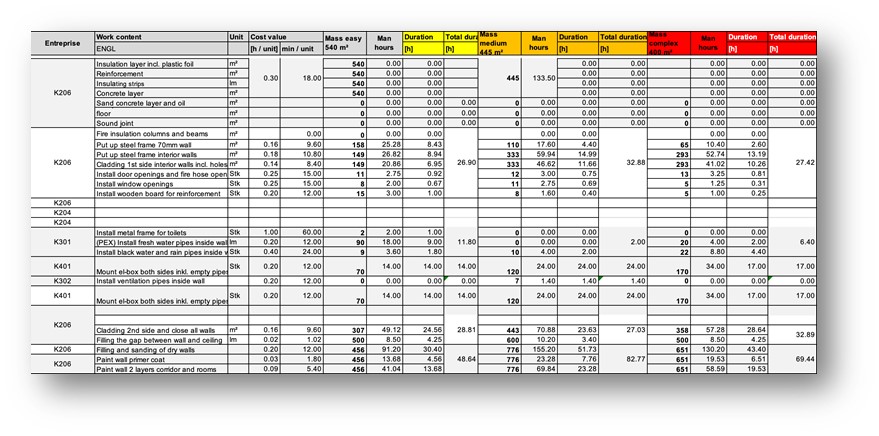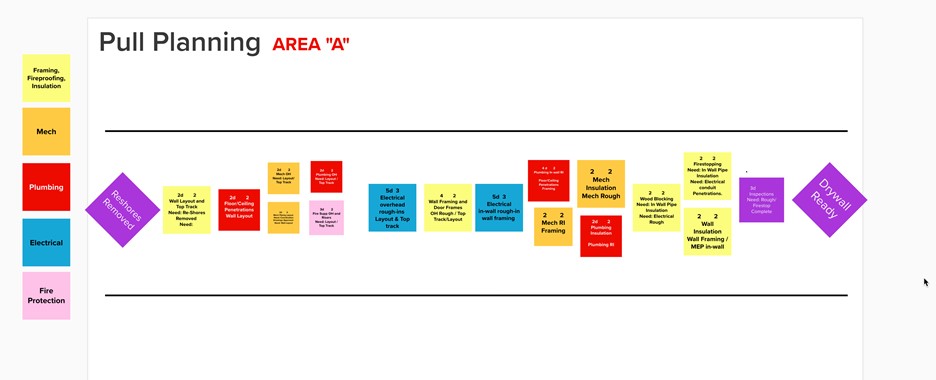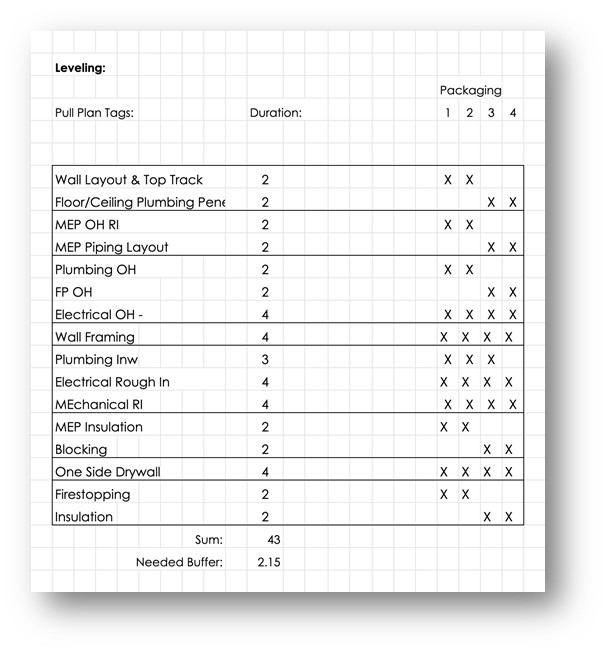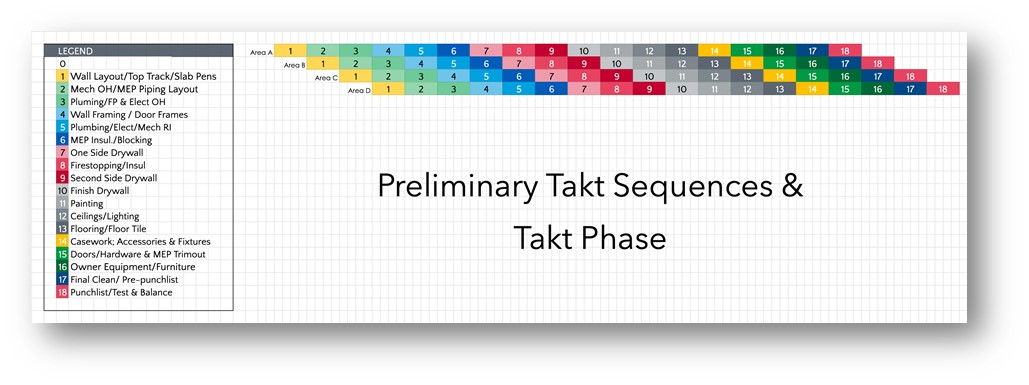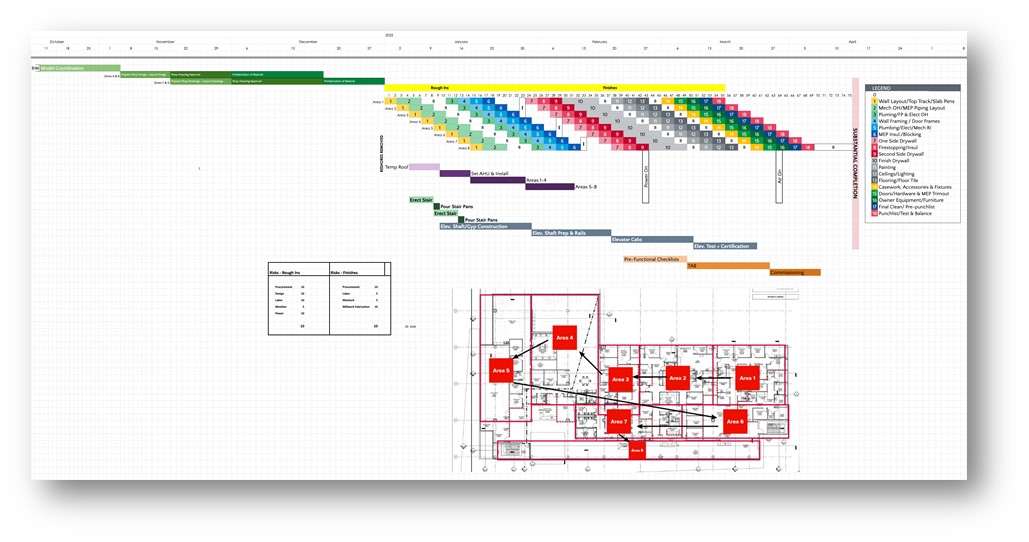Lean expert Jason Schroeder of Elevate Construction takes a deep dive into Takt Time and explains Phase Planning and Pull Planning in a Takt-ed System.
Master schedules for a project that are made without phase planning, pull planning, and last planner input have historically been pushed onto trades, foremen, and workers without buy-in, collaboration, or knowing if the schedule dictated is even possible. Phase planning—using pull planning techniques, the involvement of the trade foremen, and collaborative meetings like the weekly work planning meeting—have helped to change that. As we discussed in the previous blog post, phase planning provides the sequence, the look-ahead schedule provides the alignment, and the weekly work plan provides the collaboration and commitment. The one question many may have then, is, “How does a pull plan tie into a Takt-ed system?” Well, I am glad you had the same thought, because here we go!
Phase Planning
Phase planning is a process where the project team, under the direction of the project superintendent and/or project manager, anticipates key milestones that represent a phase of work. This planning is usually facilitated with a process called pull planning.
Pull Planning
Pull planning is a Lean process where trade partners, along with the project management team, identify the proper sequence of work according to project’s needs and the needs of each individual contractor. Per tradition, the practitioners usually identify a milestone on the pull planning backdrop, and each contractor, after proper preparation and onboarding activities, places tags or stickies on the wall in a format that identifies the point in the sequence, the duration, company name, crew size, and needed predecessors that will allow that activity to take place. The teams create the sequence together through practices and rules that should provide a final sequence that is more realistic than a dictated plan from the general contractor made in a silo. This coordinated sequence is then included in the overall master schedule, or simply placed on planning boards or a project application that houses the data.
Phase Planning in a CPM System
Phase Pulls & Takt
So, how does a phase plan with pull planning, or a phase pull help a Takt plan? Well, they are an integral part of it. The phase pulls become Takt sequences within the Takt phase and plan. Let’s look again at the picture we showed you in the previous blog post. In the picture below, you can that we #1. first identify Takt zones, then we #2. select a representative zone, and we #3. pull plan that zone. Once the pull plan is complete, we can then simulate the Takt sequence and the Takt phase.
Phase Planning in a Takt System:
Identifying Preliminary Takt Zones
Takt zones—sometimes known as geographical areas, production areas, or sequences—are the areas defined within the phase to identify work that will be scheduled on a rhythm per the Takt time. To get portions of work broken down to fit within a drumbeat, we must break the work up into zones that can be completed according to that drumbeat. This is easy to do, especially if the first planners know the general direction of the flow and how much area can be completed within the Takt time. So, the first planners literally guess—and yes, I said guess—on the right size areas needed to break up the floor, exterior, or general work area. Once we do that, we can…
Create Takt Zones & Select a Representative Zone:
Pull Plan the Representative Zone
Now that we have a preliminary Takt zone size, we can outline the sequence of one representative Takt zone. Before you begin the pull plan, you may want to consider getting quantities for the representative area to better help trades visualize the commitments they are making.
Example of Identifying Quantities by Zone:
The team will collaboratively pull the sequence inside the first representative Takt zone by following these steps:
- Ask trades to come prepared with their activities, tags, or sticky notes ahead of the meeting, and to think about what each activity needs for them to begin.
- When opening the meeting establish the following:
- The time scale
- The trade colors
- The sticky note format
- The parking lot
- The rules of the meeting (we recommend asking the group to make the rules of the pull plan together). Common rules teams list are:
- No one touches each other’s tags
- Make commitments to each other
- Work from the milestone back
- Turn the sticky to a diagonal if it has an unmet constraint
- Sidebar non-pertinent conversations
- Each trade will ask for the preceding tasks to be placed on the board And so on.
- Begin building the sequence of the pull plan until there are no more predecessors or needed activities.
- When the sequence is done, the team can work the plan forward to ensure it fits within the target duration and to introduce parallelization of activities. The team will ensure the activity sequence is optimized.
The Pull Plan:
Once this is done and the first representative Takt zone is pulled, it is time to organize these into work packages and Takt wagons in a preliminary manner. When observing the sequence, it may become clear what average Takt time each activity fits within. The duration of each work package will inform you what Takt wagon it needs to fit within.
Packaging & Leveling:
Package Them into Takt Sequences
A Takt sequence (or Takt train) is a sequence of Takt wagons. Each Takt wagon includes one or more work packages, and each work package contains multiple work steps. By this point, stickies from the pull plan sequence have become either a Takt wagon, a work package, or a work step depending on size and how it is packaged. Knowing how they translate comes from facilitation and experience, but if the activity was a large summary of a general scope of work that occurs by itself in a Takt time scale, it generally becomes a Takt wagon. If it is a specific scope of work that summarizes steps that work in the same area as another scope, it would become a work package. If the activity was a detailed step as a part of a scope of work, then it is likely a work step. For now, we need to know what Takt wagons will fit within our single representative Takt zone within one Takt time.
The current work steps or work packages should all be generally packaged within Takt wagons. This sequence or train is then placed in the Takt plan within the Takt time scale. These then combine to make a Takt Plan.
Build Your Takt Plan
A Takt sequence or Takt train is a sequence of Takt wagons. Each Takt wagon includes one or more work packages, and each work package contains multiple work steps which ends up as a horizontal summary of the work in that area. Now we need to show the relationship between the other Takt zones. This is where we copy the sequence down to other rows in the Takt phase at the right stagger. The stagger is important because the stagger between the start of each train may not follow only one Takt time. If there is a Takt time of 5 days, each train may not be offset from each other by 5 days. Rather, they may have a stagger of 10 days and use two Takt times between starts. Either way, we will copy these sequences down at the correct stagger. When you have completed this you will see if it generally fits within the overall project duration or phase duration, but only in a preliminary sense. Next, we must ensure the plan is optimized.
The Preliminary Takt Legend & Phase:
Creating and seeing this preliminary Takt phase is a crucial step on the path of fully utilizing a Takt system: the optimization. So, how do we take this coordinated plan to the finish line and make it look like the plan below? For that, you will have to tune in next week to learn about the magic of optimization using Little’s Law. Stay tuned!

